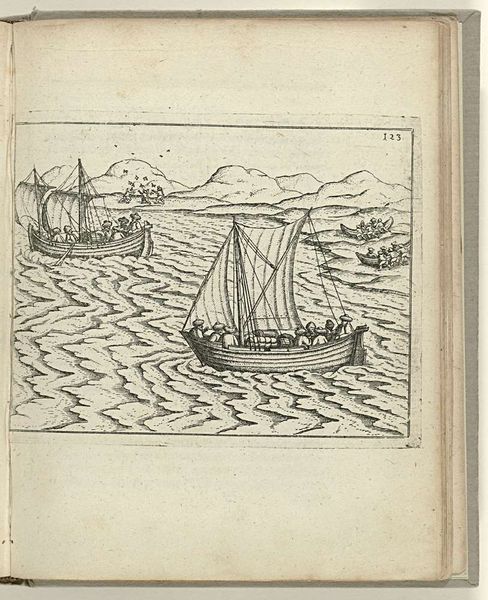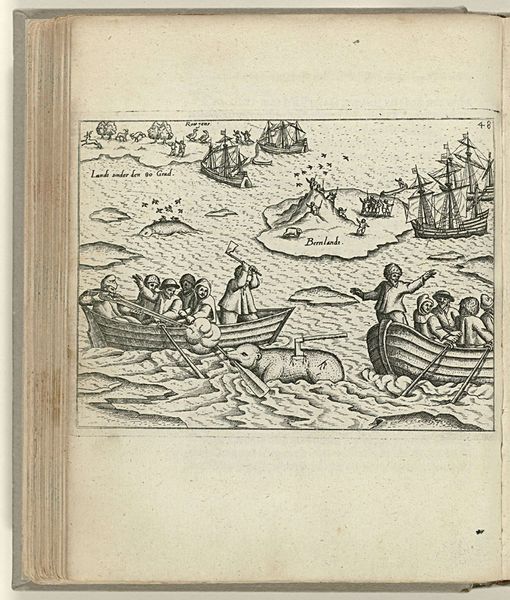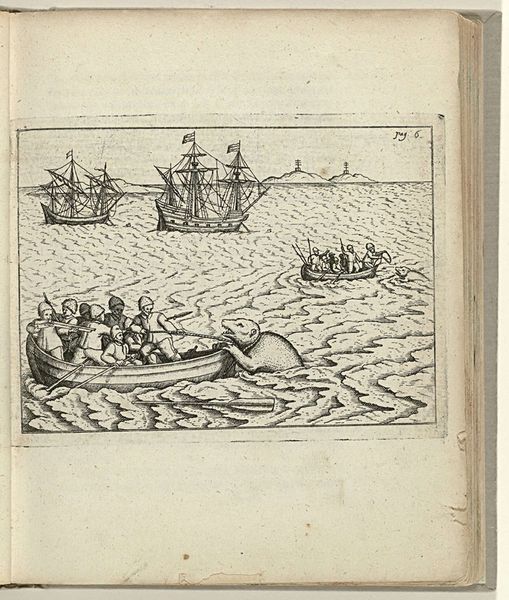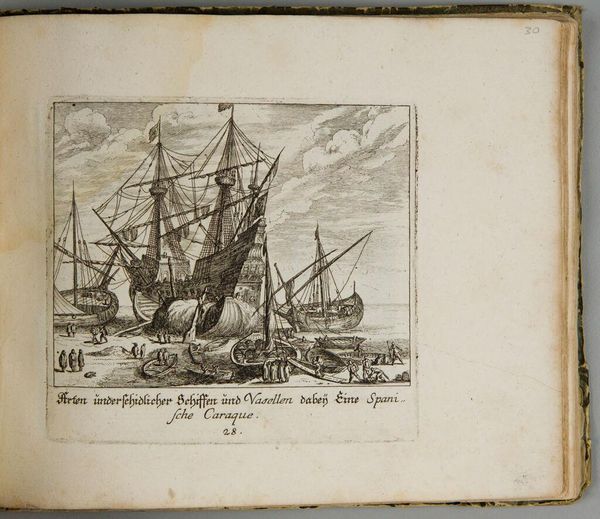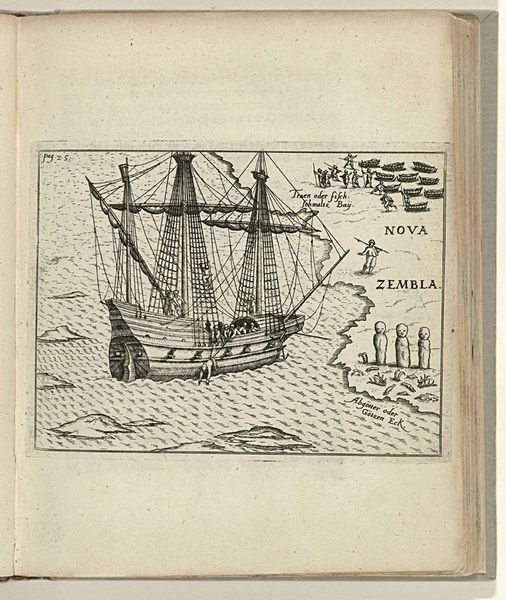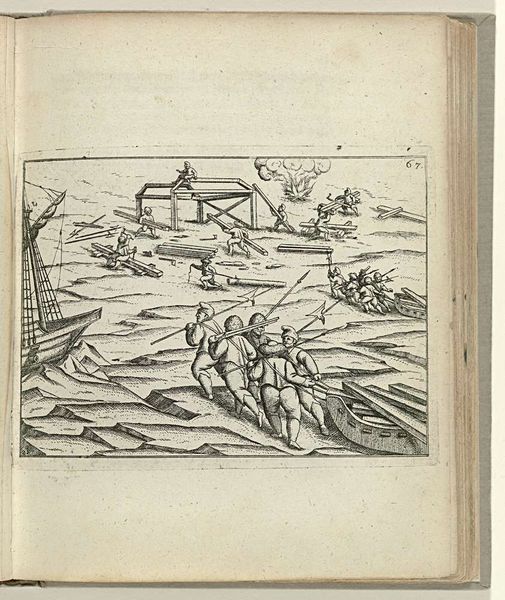
print, engraving
#
toned paper
#
dutch-golden-age
# print
#
pen sketch
#
sketch book
#
landscape
#
personal sketchbook
#
pen-ink sketch
#
pen and pencil
#
line
#
pen work
#
sketchbook drawing
#
cityscape
#
storyboard and sketchbook work
#
sketchbook art
#
engraving
#
realism
Dimensions: height 105 mm, width 145 mm
Copyright: Rijks Museum: Open Domain
Editor: We’re looking at "Het schip raakt vast in het ijs, 1596," or "The ship gets stuck in the ice, 1596," from 1598. It's an engraving printed on toned paper, and it seems to capture a moment of harsh reality for these explorers. It's incredibly detailed, given the medium, but there's almost a feeling of isolation. What stands out to you as you look at it? Curator: It's interesting you pick up on isolation. These images, and particularly this one, served a crucial purpose in shaping public perception of these expeditions. Consider the role the print plays, not as a purely objective record, but as a curated narrative. What political or economic aims might this image have served? Editor: Well, the Dutch were major players in exploration at this time. Maybe it was about demonstrating their ambition, even in the face of adversity? Was there a specific expedition this print references? Curator: Indeed. This image relates directly to Willem Barentsz's ill-fated voyage to find a Northeast Passage to Asia. It’s powerful to see the stark contrast: the ambition represented by the ship itself, juxtaposed against the unforgiving ice. Think about how this scene would have been received by the public back home. Did it encourage or discourage further investment and exploration? And how did these depictions reinforce a heroic, conquering narrative of Dutch exploration, obscuring indigenous experiences and ecological impacts? Editor: So it’s not just a depiction of a failed voyage, but a carefully constructed piece of propaganda. I hadn't thought of it that way. It really contextualizes how art like this served a purpose far beyond just documentation. Curator: Exactly! It allows us to consider art's critical role in shaping the stories we tell ourselves about our history.
Comments
No comments
Be the first to comment and join the conversation on the ultimate creative platform.

